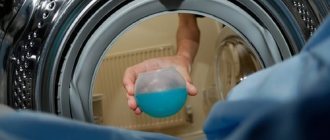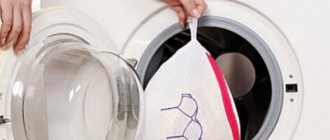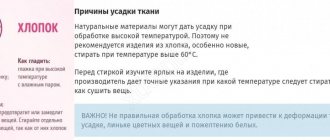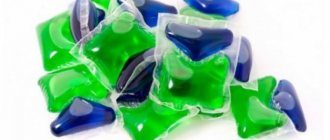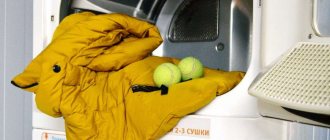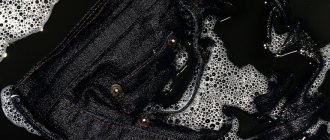Before buying something made of cotton fabric, it is worth finding out how to wash cotton while maintaining the appearance of the product and its basic characteristics. Cotton fabric is a natural type of fabric. It is hypoallergenic, breathable, and tactilely comfortable. Cotton also does not electrify, unlike synthetics.
However, there were some downsides. Wrinkling, shrinkage and, most importantly, rapid contamination - these are the main disadvantages of the material. Moreover, as a result of improper washing, light cotton fabrics may fade and turn yellow.
However, knowing at what temperature cotton can be washed and how to dry it properly, you can maintain the attractive appearance and softness of your favorite cotton items for a long time.
Variety of cotton
Cotton fabric is one of the most popular materials in the textile industry. This was facilitated by the practical, hygienic and aesthetic properties of the fabric, as well as its low cost. Cotton is the basis of such materials as denim, chintz, satin, and calico. It is used for both clothing and home textiles.
Thanks to a large selection of weavings, the industry has learned to produce cotton materials of different densities and structures. Since they are based on cotton fibers, in most cases the conditions for washing and drying them are the same.
Types of cotton fabrics
There is a huge variety of cotton fabrics on sale. Minimal knowledge about its types will help you make sure you don’t make a mistake with the quality of the purchased material.
Organic
Organic cotton is an environmentally friendly material produced without the use of chemicals. To grow cotton, no pesticides or insecticides are used, but only natural fertilizers - manure and compost. The collection of fibers is carried out manually, since only a person is able to determine the degree of maturity of the fibers. Organic fiber production accounts for only 1% of the world's cotton turnover. It is labeled as “organic cotton” and is suitable for sewing clothes for newborns and allergy sufferers.
Mercerized
If you see a “mercerized” mark on a product, it means that the material was additionally treated with a special compound to improve its quality characteristics. In the case of cotton, the fibers are treated with caustic soda, which increases the strength and wear resistance of the material. Typically, mercerized cotton is used to create yarn or in the textile industry for making home linen.
Cotton jersey
Originally produced only from wool, jersey fabric began to be improved over time by adding other fibers to the composition. Cotton, which is part of the fabrics, gives the material appropriate properties, such as shape retention, lightness, and matteness.
Mixed
At the moment, blended cotton is considered the most wear-resistant, which has made it popular in the production of workwear. The material is a mixture of synthetic polyester fibers and cotton itself. The material is characterized by maximum strength and durability, retains color well, does not conduct static electricity, and can withstand extremely high and low temperatures. In addition to workwear, jackets and raincoats, camping equipment, awnings and tents are made from cotton blends.
Pima
Pima cotton is considered the softest in the world because it is made from the longest cotton fibers grown in Peru and the United States. It has maximum strength and softness, due to the special weave of fibers, as well as unique adsorbing properties. Due to its high absorbency, it is easy to leave a stain on this fabric.
Interlock
The material consists of 100% cotton fibers woven using a special knitting technique with two needles. The result is a double knitted fabric, smooth on both sides. The material is very soft and pleasant to the body, which is why it is widely used in the creation of children's clothing, dressing gowns and pajamas. There are 3 types of interlock: singing, ring and open. Each of them is processed by various surface grinding methods and has properties such as wear resistance, thermal insulation and breathability.
Ranfors
Ranfors cotton came to us from Turkey, since initially it was produced only by the company of the same name. The peculiarity of the creation of the material is increased cleaning and processing of fibers, as well as a special diagonal weaving technique, distinguishable from standard plaid. As a result, the fabric becomes more durable and dense, is less subject to deformation and does not shrink. The high density of the fabric allows you to dye products in a variety of colors and apply bright designs. Most often, bed linen is made from this material.
Percale
Percale is a standard cotton fabric produced by twisting the fibers in a characteristic way before weaving. During the production process, the canvas is also impregnated with a special composition, thanks to which the material becomes especially durable. At the same time, the canvases do not lose their softness and lightness. Thanks to its declared properties, percale becomes an excellent raw material for sewing bed and underwear, blouses and shirts.
Batiste
Lawn fabric comes in several types, but the most expensive are those hand-twisted from natural cotton. The material is very light and airy, allows air to pass through well, does not cause skin reactions, is soft, but at the same time holds its shape well and does not deform. Cotton-based cambric is mainly used for sewing clothes, both everyday and festive, as well as for making home textiles.
Cotton gas
Gas materials are particularly airy and light. In the production of fabric, the thinnest, almost transparent threads are used. In addition, the material is unique due to its special weave of fibers that do not adhere to each other. Due to the air space between the threads, the unique lightness of the material is achieved. The fabric is mainly used to make light summer clothes.
Grebennoy
Combed cotton is a special type of yarn produced by twisting cotton fibers that have not been combed. The yarn turns out fluffy and soft. Products made from combed yarn have a matte finish, absorb moisture well and allow air to pass through.
Cotton voile
Delicate and flowing fabric, which belongs to the elite category. It is created using a plain weave of fibers and is somewhat reminiscent of gauze. On sale you can find plain-dyed, bleached or printed veils. Canvases painted with transitional colors look original. Voile cotton is mainly used for making wedding and evening dresses or accessories, as well as home decor items.
Mako cotton
Expensive material produced in Egypt. It has unique softness and a unique noble shine. The material is mainly used to produce high quality underwear.
Peach cotton
A special type of cotton fabric with a soft velvety surface, which is achieved by treating the surface of the finished fabric with a special brush.
Cotton BIO-WASH
A material that is pleasant to the body, the softness of which is achieved through treatment with natural biologically active, rather than chemical, substances. The result is a fabric that is soft and pleasant to the skin and does not cause allergic reactions.
Sorting
Any washing begins with the preparation stage. You can’t stuff all the laundry in one pile into the drum of a washing machine. Different textures and weave types affect washing requirements. Things of lower density may tear at too high speeds; denser materials will not be cleaned at low temperatures.
Therefore, before each wash, items must be sorted. There can be several sorting principles.
- By appointment. Clothes are not washed with towels, towels with socks, and socks with underwear.
- By color. White cotton is washed at a higher temperature than colored cotton.
- By texture/type of fabric. Thin chintz and muslin can only be washed at low temperatures. Fleecy material, such as flannel or corduroy, is washed mainly by hand or on the appropriate washing machine setting.
- According to the degree of pollution. Heavily dirty items require pre-soaking.
You can determine the type of wash, including its temperature, by looking at the label. On the labels, the manufacturer indicates basic information about product care.
Washing highlights
Cotton should be sorted and washed separately. It all depends on the degree of pollution. If children's clothes are heavily soiled, they should be pre-soaked.
Items can be soaked in salt water for 2 hours before washing. White cotton socks get dirty very quickly, it can be difficult to wash off heavy stains, and the fabric almost always remains grayish on the soles. There is a little trick: soak the socks in a solution of boric acid. To do this, pour two spoons into 8 liters of water, mix, and place the contaminated items there for two hours. After a certain time, wash as usual. The socks become snow-white, like new.
It is difficult to wash cotton items with colored embroidery. Threads can fade and stain white fabric with their color. The secret to washing such clothes is simple: you need to wash them by hand in salt water. Add a little salt to 500 ml of water, mix well and soak for 20 minutes. You need to wash clothes by hand with the addition of detergent and a little salt. Then rinse well with cold water. Clothes with embroidery are not wrung out, but are wrapped in thick fabric to absorb excess moisture. Then hang it on the dryer to dry naturally. It is better to hang clothes outside if conditions permit.
5 mistakes when washing bed linen
Selecting a detergent
The type of detergent is equally important. Nowadays there are many powders, gels and capsules on sale. For cotton fabrics, only products that contain water softening components are suitable. In addition, most detergents contain compounds that break down fat and protein, so powders and gels work even in cold water.
For white cotton, you can use products containing bleach. Oxygen ones are considered the best, since they do not harm the structure of the tissue, like chlorine ones, for example.
To wash children's clothes and clothes of people with hypersensitive skin, special hypoallergenic, fragrance-free products are purchased. Their main difference is that they are completely rinsed out of fabrics.
Powders
Manufacturers produce powders for machine and hand washing. Detergents for washing machines are characterized by reduced foaming. The main disadvantage of powders is the difficulty with dosage when we are talking about different types of fabric and poor solubility in cool water.
Another drawback is the large number of unnecessary and sometimes harmful additives. In some types of powders they make up 80% of the volume. Therefore, more and more people are choosing other, more environmentally friendly types of detergents.
Gels
Gels are called liquid laundry detergent. They dissolve better in water, even in cold water, and are convenient in terms of packaging. Gels are characterized by better rinsing from textile fibers, the formation of an optimal volume of foam and a convenient dosage in the form of capsules.
Gels remove stains better, but often have a strong fragrance, which is why they are not suitable for children's underwear and people sensitive to fragrances. Another drawback is the bright, unusual capsule packaging, which often attracts children, so the capsules need to be stored in a place that is difficult for children to reach.
Bleaches
Bleach is often used to wash white and undyed cotton. Regular powders can leave behind a yellowish residue, so using bleach is more than advisable.
There are chlorine-containing and oxygen-containing bleaches. Chlorine is effective, but it thins the fibers, which leads to a decrease in the wear resistance of the laundry. Chlorine bleaches must be thoroughly rinsed out of the fabric, otherwise it can lead to skin irritation.
Oxygen bleaches are more gentle. They are gentle on the fibers without damaging them, and are excellent at removing stains. But most importantly, oxygen bleaches can be used even for colored laundry. The downside is that they are more expensive.
Stain removers
The form of release of stain removers is very diverse. Stain removers are available on the market in the form of paste, gel, sprays, sticks and simply liquids. The operating principle is approximately the same. It is necessary to apply the product to the stain and leave it for the time recommended by the manufacturer. Then the laundry treated in this way is washed and rinsed thoroughly. The most convenient way to do this is in a washing machine.
Stain removers, like bleaches, come with both chlorine and active oxygen, therefore, depending on the composition, they are used for white and colored linen.
Folk remedies
People with an allergic reaction to chemical components often use folk remedies. For example, you can get rid of stains on cotton using lemon juice, hydrogen peroxide, laundry soap, and baking soda. It is important to rinse these products thoroughly and monitor the concentration (especially lemon juice).
Recently, eco-friendly products such as soap nuts have been gaining popularity. They are easy to use. The nuts are placed in a fabric bag and, together with the laundry, placed in a washing machine or container with warm water. The fact is that nuts contain saponins - substances that form a cleaning foam, thanks to which dirt is washed out. At the same time, soap nuts are environmentally friendly: they do not harm humans and the environment.
How to remove yellowness and stains from products
After constant washing, white cotton clothes become grayish, sometimes yellowing appears. How to return such things to their original whiteness. Using bleach for this purpose is unsafe and may damage the fabric. There are folk recipes on how to remove such stains:
To do this, take the following components:
- Hydrogen peroxide – 30 grams;
- Ammonia – 15 grams;
- 10 liters of water.
Add hydrogen peroxide and ammonia to water at a temperature of 60 degrees, mix and leave clean clothes for half an hour. Then the clothes are thoroughly rinsed and hung out to dry. This method makes things pure white and the dirt disappears.
To remove chocolate, juice, coffee, fat, you need to wash with detergent or soap, then boil with bleach. Use enamel dishes, without cracks and rust, for half an hour from the moment of boiling over low heat. Rust stains are not removed.
How to hand wash cotton
Hand washing is recommended for delicate cotton fabrics such as muslin, chintz, voile. They have a thin structure and can be damaged when machine washed. Products decorated with special decor: beads, sequins, rhinestones, metal elements are also hand washed. Fabrics with embroidery, appliques and lace trim are also recommended to be washed by hand.
The hand washing process is as follows:
- Dissolve the required amount of detergent in a container with hot or warm water. If required, use a stain remover first.
- The products are first soaked for 30-40 minutes.
- Then carefully wash off the dirt, trying to gently rub the material.
- Next, rinse the items thoroughly at least 2-3 times. During the rinsing process, you can add conditioner or table vinegar to the water, then the fabric will become softer and easier to iron.
As for the spin cycle, the main thing here is not to overdo it. If thin cotton is twisted too much, there is a risk of damage to the fibers. Therefore, items made from thin cotton fabrics are often dried without spinning on hangers.
As for how many degrees washing occurs, then, as a rule, this figure does not exceed 40°
Properties and characteristics of cotton
Many of us know that natural cotton fabric wrinkles a lot. This is due to the fact that the fibers of the material lack elasticity. In addition, they:
- durable;
- resistant to alkalis, phenol and acetone;
- withstands the influence of moisture and light for a long time;
- hygroscopic.
Natural cotton fabric has the following advantages:
- softness;
- ease of painting;
- hypoallergenic;
- easy to bleach;
- absorbs moisture well.
Flaws:
- high-quality canvas is expensive;
- wrinkles a lot;
- difficult to smooth out;
- may shrink;
- takes a long time to dry;
- Low quality material quickly becomes unusable.
How to wash cotton in a washing machine
When washing in a machine, you need to choose the right mode and temperature.
The step-by-step guide will look like this:
- Sort laundry by color.
- Place things in the drum. Please note that all washing machines have weight restrictions.
- Place the powder in a special compartment or throw a capsule with gel directly into the drum of the machine.
- Select washing temperature: from 40 to 90°C. When choosing a high temperature, we must not forget that cotton fabric shrinks.
- Set the spin mode (from 500 to 1200 rpm). The optimal option for cotton is 500-800 rpm.
- When choosing a mode, you should take into account the structure of the fabric and the degree of contamination. The most commonly used are “Delicate Wash”, “Eco-Cotton”, and regular “Wash”.
- Use a double rinse setting to completely rinse detergents from the fibers of the material.
After washing, before drying, you should once again inspect the laundry for stains and traces of powder.
Machine
Is it machine washable? Can. It is not difficult to process things at home, because modern automatic technology always comes to the rescue.
How to wash cotton in a washing machine correctly:
- Pre-treat any stains. Don't wait until wash day, remove stains as soon as they appear.
- Having chosen a suitable detergent, proceed to the procedure itself. First, load the laundry into the drum compartment. Underwear is turned inside out, bras put in an ecial pouch, T-shirts and shirts are zipped or buttoned and also turned inside out.
- Then set the appropriate washing mode. Typically for cotton there are four. This is an intensive wash, with soaking, gentle and cotton. After setting the correct cycle and water temperature, pour in the powder. For white and light-colored clothing, we recommend using Tide Plus Bleach Powder. If you want a nice scent, you can buy Tide Plus A Touch of Downy Liquid. If you're worried about color fading or fading, choose Tide Plus Cold water Clean Liquid to keep your clothes vibrant.
- Turn on the “Extra Rinse” mode. If detergent remains in the threads, the clothes will turn yellow. Rinse in slightly warm water. In addition, this will prevent things from shrinking.
- After the cycle ends, immediately remove clothes from the washing machine to prevent mold growth.
After removing items from the drum, shake them thoroughly to minimize wrinkles.
As for the washing time, it depends on the amount of laundry placed in the machine. If there are a lot of things, it is recommended to set the “Cotton” mode with a temperature of 60 degrees, or less is possible.
This wash lasts 2–3 hours. During this time, all things placed in the drum are washed and rinsed well.
How to wash cotton without shrinking? Observe temperature conditions and drying rules. That's the whole secret.
At what temperature should you wash cotton?
Cotton fabric can be washed at both 30°C and 90°C. It all depends on the thickness of the material. It is recommended to clean the thinnest fabrics, as well as items with decorative elements, at 30°C. Thick - at 90°C. So, for towels, tablecloths, blankets and bed linen, set to 80-90°. But thin muslin is washed at 40°C.
Moreover, you should know that cotton does not shrink when washed at temperatures not exceeding 60°C.
What is sewn from cotton?
Cotton is one of the most popular materials used for the production of clothing and home textiles. For example:
- light cotton fabric is used for sewing summer clothes, since the material absorbs sweat well and allows the skin to breathe;
- for sewing warm clothes, brushed cotton is used;
- simple but high-quality sets of bed linen, tablecloths, curtains and drapes are also made from cotton fabrics;
- technical cotton materials are used to create packaging materials.
What to do to make the material shrink
Cotton often stretches when worn. A striking example of this is jeans, whose material is denim, which is made from cotton. Washing will help return it to its original size.
In the washing machine
Items made from medium weight fabric are washed at 60°C, thick cotton – at 90°C. To make it sit down, set the maximum number of revolutions. It can be either 900 rpm or 1200. The built-in dryer won’t hurt either. Hot air will greatly promote shrinkage.
Manually
Shrinkage may also occur when hand washed. To do this, after rinsing, add boiling water and conditioner to the container. Cover the container with a lid or bag and leave for 5-7 minutes. Then the items are thoroughly rinsed in cold water and wrung out.
Preparing cotton items for washing
So, cotton washing is planned. First of all, cotton products must be sorted by color and the degree and nature of contamination examined. Cotton items that need freshening will be washed properly on a regular wash cycle with a short cycle.
Thin, delicate fabrics are washed by hand. If things are very dirty, you can choose special programs, namely cotton, eco wash or eco cotton.
Not every washing machine owner knows what eco is. A number of models provide economical programs. The wash cycle uses less water, causing the layers of fabric to rub against each other more intensely, causing the items to wash themselves. Usually the cycle lasts longer. Whether it is worth choosing such a program depends on the individual situation with water and electricity consumption, as well as the characteristics of the natural material.
Drying
Cotton products are dried in a molten state. This greatly facilitates the subsequent ironing process. It is better to dry thin clothes on hangers.
It is not recommended to leave items in direct sunlight, which may cause the items to fade or turn yellow. Cotton items dry quite quickly. They can be removed in a slightly damp state, which makes the ironing process as convenient as possible.
Washing cotton items correctly is not that difficult. The main thing is to know the basic rules, then the product will not only become dazzlingly clean again, but will also retain all its characteristics.
Additional care for cotton clothing
Clothes require not only proper washing, but also careful care so that the clothes look neat and clean in the future. Sometimes you can see marks from clothespins or rope that are difficult to remove; ironing does not help, and from the outside the product looks untidy and careless.
Therefore, they dry cotton items horizontally or vertically, throwing them over a rope, and do not pin them with clothespins so as not to leave marks. The fabric is ironed slightly damp. Clothes are sprayed with water before ironing or an iron with a steam function is used.
After purchasing the product, carefully study the label on the clothing and follow the appropriate recommendations for washing and caring for them. There are recommendations at what temperature to iron cotton items. By following the instructions, the clothes will not get damaged.
Caring for cotton clothes is not difficult if you know the washing and care rules. Then things will last a long time and look like new.

